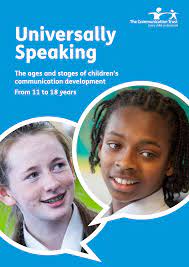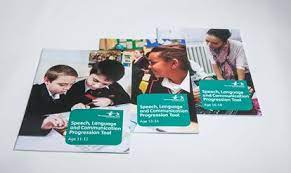How I will know if a child or young person needs help with their understanding, talking and communication
You haven't selected an area yet so you will only see core resources from across the UK. Select your local area from the home page
The resources here will help you reach the outcome: "I know what to expect and when with young adult's understanding, talking or communication."
Click the star icon ![]() next to the items you want to save and view them in your pathway
next to the items you want to save and view them in your pathway
Universally Speaking 11-18
Universally Speaking is a series of booklets for anyone who works with children and young people. The booklets show where children and young people should be with their communication skills at any given age. You can use the booklets to find out whether the children and young people you work with are on the right track, what helps them learn to talk and listen and what to do if you have concerns about any of their communication abilities.
Cost: Free




What's typical talk at secondary?
This poster is an easy reference for teachers to understand young people's speech and language development from 11-18 years and supports them in identifying children who may have speech, language and communication needs.
Cost: Free


TCT Progression Tools Secondary
The Progression Tools are based on typical speech and language development and provide a way of tracking progression of these skills over time or following interventions. The Tools are not a diagnostic tool, however they do provide information to help decide whether children and young people would benefit from a targeted intervention or specialist assessment and support.
Cost: £






